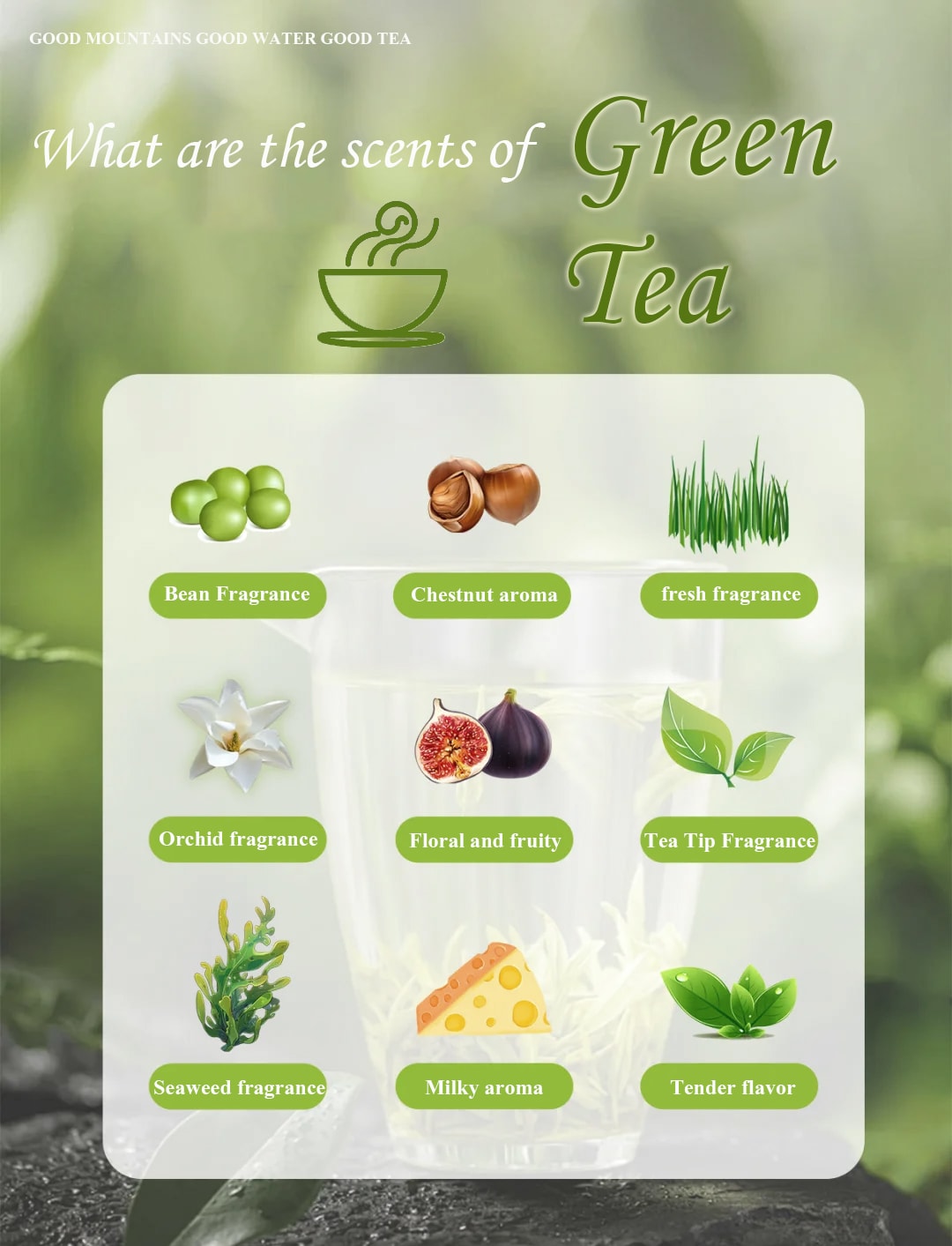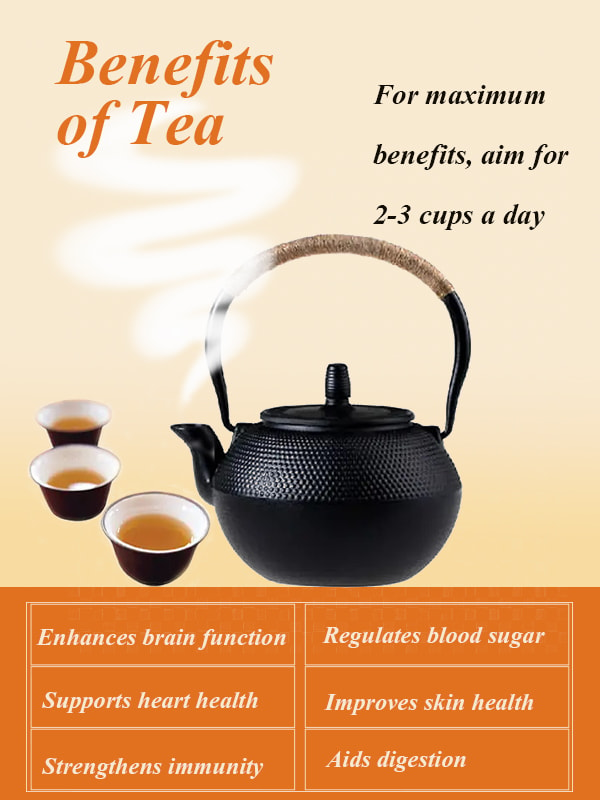
How to Make Green Tea Taste Good?Easy Tips for a Smooth, Flavorful Cup
HHShare
Wondering how to make green tea taste good? Discover simple tips to brew a smooth, flavorful cup every time, enhancing aroma and reducing bitterness.
What does green tea taste like?
Green tea has a variety of flavors. Most people like to drink its freshness. If you want to make green tea taste better, first let's understand its flavor.
Understanding Green Tea Taste
Green tea has a fresh, light, and grassy flavor, but the exact taste can vary depending on the type and how it’s brewed. Here’s a quick breakdown:
Sweet and delicate — High-quality green teas often have a subtle sweetness and smooth finish.
Vegetal and grassy — Some green teas, like Japanese Sencha, have a seaweed-like, umami taste.
Slightly astringent — If steeped too long or at high temperatures, green tea can become bitter or tannic.
Nutty or floral — Certain varieties, like Chinese Longjing (Dragon Well), carry nutty and roasted notes with a hint of floral aroma. For those who prefer a more palatable brew, flavored green teas, which often include fruits and flowers, can mask astringency and bitterness while providing a more enjoyable tasting experience.

Why Green Tea Can Taste Bitter
Green tea contains catechins, chlorophyll, and caffeine, which can make it taste bitter. Cold brewing can help avoid bitterness by steeping tea leaves in cold or lukewarm water for an extended period, typically in the fridge.
Over-brewing can also make green tea taste bitter.
Avoiding over-brewing and re-steeping the same leaves can help achieve the best flavor.
Catechins are the main culprit behind the bitterness in green tea.
What factors affect the taste of green tea?
The taste of green tea is influenced by a combination of “natural factors”(related to the plant and growing environment) and “human factors”(how it’s processed and brewed). Here’s a breakdown:
Tea Variety (Cultivar)
Different green tea cultivars (like Longjing, Gyokuro, Biluochun, Sencha) have distinct flavor profiles - from sweet and umami-rich to grassy or floral.
Growing Region & Climate
Learn how they affect the taste of green tea:
- Altitude: Higher elevations often produce tea with fresher, more delicate flavors due to slower leaf growth.
- Soil: Mineral-rich soils can enhance complexity and depth.
- Climate:Temperature, sunlight, humidity, and rainfall patterns influence sweetness,bitterness,and aroma.
Harvest Time
First flush (spring) leaves are tender, rich in amino acids (more sweetness/umami).
Later harvests (summer/autumn) often have more catechins, leading to stronger, more astringent flavors.
Shade vs. Sun Growing
Shade-grown teas (e.g., Japanese Gyokuro) develop higher levels of theanine, giving a sweeter,savory taste.
Sun-grown teas tend to have more catechins, adding bitterness and briskness.
Processing Method
Steaming (common in Japan) gives a fresh, vegetal, sometimes seaweed-like flavor.
Pan-firing (common in China) imparts a nutty, toasty profile.
Oxidation prevention speed and leaf handling also affect aroma and smoothness.
Brewing Method
Water Temperature: Too hot (above~80C/176F) can make it bitter; lower temperatures preserve sweetness.
Steeping Time: Over-steeping extracts excess tannins, increasing astringency.
Water Quality: Soft water often brings out sweetness; hard water can dull flavor.
How to make tea taste better-Choose high-quality green tea
Selecting high-quality green tea leaves is essential for a good-tasting brew.Look for tea leaves that are fresh, aromatic, and have a good balance of flavors.Avoid green tea bags, as they can contain low-quality tea leaves and dust.
The following are some high-quality teas recommended:
Longjing (West Lake Dragon Well)
Longjing is Known for its delicate, chestnut-like aroma and smooth, refreshing taste. A classic Chinese green tea loved worldwide.
Biluochun
Biluochun is famous for its fruity and floral aroma, tender leaves and clear and bright wine. It is very suitable for customers who like fragrant and overflowing.
Gyokuro (Japanese Shade-Grown Tea)
Grown under shade to boost sweetness and umami, producing a rich, full-bodied flavor.
Xinyang Maojian
Delicate and tender leaves with a lasting sweet aftertaste, a well-known Chinese green tea from Henan province.
Huangshan Maofeng
Smooth, aromatic, and lightly floral, with uniform leaves and a refreshing finish.
Correct Brewing Methods That How To Make Green Tea Taste Good
how to make tea taste better?Brewing green tea requires attention to temperature, steeping time, and water quality.
Water temperature
Steeping time
Tea Type
Water Quality
Try more Experiment
How to sweeten green tea ?What to add to green tea ?
Try the following methods which may help you.
Adding a Squeeze of Lemon
Lemon juice can help balance out the bitterness of green tea.
Use a slice of lemon or a squeeze of fresh lemon juice for the best flavor.Experiment with different amounts of lemon juice to find the perfect balance.
Adding lemon juice can also help bring out the flavors of herbal teas.
Adding Sweetener for a Better Taste
Honey, sugar, and other sweeteners can enhance the flavor of green tea.Use a small amount of sweetener to avoid overpowering the tea.
Experiment with different types of sweeteners, such as honey and agave nectar, to find the perfect one for your taste buds.
Adding sweetener can also help balance out the bitterness of green tea.
Adding a slice of ginger or a cinnamon
Adding a slice of ginger or a cinnamon stick can also add depth and warmth to the flavor. Herbal tea can also be enhanced with natural ingredients to achieve a more enjoyable experience.
Experimenting with different flavor combinations, such as mint and lemon, can create a unique and refreshing taste.
What are the benefits of green tea

Green tea offers a wide range of health benefits thanks to its rich antioxidants and natural compounds. Here are some of its key benefits:
Boosts metabolism and aids weight loss — Catechins in green tea help increase fat burning and improve metabolic rate.
Enhances brain function — Contains caffeine and L-theanine, which work together to improve focus, alertness, and memory.
Supports heart health — Green tea is rich in catechins, particularly epigallocatechin gallate (EGCG), a powerful antioxidant.
A PubMed Central(National Library of Medicine) article indicates that EGCG exerts anti-inflammatory, antioxidant, anti-fibrotic, and tissue-protective effects by influencing cell signaling and transcription, and may benefit heart health.
Strengthens immunity — Rich in antioxidants and polyphenols, green tea helps combat free radicals and boosts immune function.
Regulates blood sugar — May improve insulin sensitivity and help lower blood sugar levels, supporting diabetes management.
Improves skin health — The anti-inflammatory and antioxidant properties can reduce acne, fight signs of aging, and protect the skin from UV damage.
Aids digestion — Green tea supports gut health by promoting good bacteria growth and reducing bloating.
For maximum benefits, aim for 2-3 cups a day. Choose a green tea you like.
Enjoy a cup of premium green tea today with Dofo Tea
At Dofo Tea, we offer premium loose-leaf green teas—naturally grown, meticulously hand-picked, and fresh, pure in flavor. Savor authentic flavor in every cup. No gimmicks, only genuine teas from responsibly sourced sources. Explore our selection of premium teas today.









